|
Yes, a student can have a 504 plan and an IEP.
For example, a student with an IEP comes to school needing a temporary medical plan, should receive a 504 plan. This would be a short term 504 plan for short term accommodations. A broken hand would require a student to have the accommodation of a scribe (someone to write for the student). These instances are few and far, though. In general, everything that is included in a 504 plan can be included in an IEP so there is not typically a need for both.
2 Comments
10/14/2019 0 Comments Tips for Negotiating IEP Team MeetingsIdentify The Problem! *Understand that interests may conflict. In the end, decisions should be made based upon the needs to be about the student *Identify the conflict or problem that is causing disagreement Ask ‘Why?” and “Why not?” to look for a cause and for a purpose to move forward. *Discover how the conflicts have developed...sometimes things have happened in the past, and these experiences are shaping the parent’s presentation and beliefs. Beliefs can be misinterpretations and misrepresentations as well. So make sure the facts of the dispute are accurate. *Know that parents might be fearful! They want to feel confident that their child is getting the best. *Ask questions and pause to actively listen to the answers *Establish objective criteria - all meetings should use fair standards and fair procedures (AKA federal and state laws) when designing the IEP. Some of what may be causing the issue is beyond the school’s level of control. *Actively listen-listen to the other side too, instead of trying to be one step ahead *Allow time for venting - to be heard. This may help you identify the true cause for conflict. *Don't lose control by reacting to outbursts; instead, actively listen to what is being said. This may also help you identify the true cause for conflict. *Make emotions explicit and acknowledge them as legitimate. Say “I understand that you are feeling hurt (angry, etc.), and I feel terrible that you feel that way.” *Remember that an apology can diffuse emotions Establish Equality! *Every team member is of equal and utmost importance. Each team member’s voice is equal. *Interests can help to define the problem. If we look for a parent’s interests, we can help to solve the conflict by coming up with compromises. Say “We are all invested in the best interest of (student’s name).” Sometimes behind conflict lies the shared and compatible interests. *Be hard on the problem, but soft on the people. If you know this student should receive specially designed curriculum, but the parent does not want the student to, try to understand where the parent is coming from, but stick to what the student needs. You want to solve the problem, but not attack the parent and/or break the working relationship. *Teaching students is an integrated experience (one’s behavior impacts the behavior of the others and vice versa). Due to this, it is important to have a positive working relationship with a student’s family. *Remember - unlike your students, you may not be able to “solve” the parent so - don't try to solve the people, but rather the problem. *Put yourself in the parent’s shoes. When conflict arises, separate the conflict from the parent. Typically, conflict is rooted in people's thinking and/or perception. Openly discuss other's perceptions and then... *Use a surprise attack! Look for chances to act inconsistently with their perceptions. Show data, when they have said you don’t know their child. *Make your proposals consistent with their values. For example, if their goal for the child is academics, propose the programming you are recommending by discussing how it will support the student’s academics. *Draft the IEP together! Agreement is easier when both all parties feel ownership in the idea. *Sit side-by-side and work as partners. *Do not be confrontational! *Don’t defend your ideas with belief, but rather, with data. *Document the data together. *Reason and be open to reason. Ask parents to state their reasonings and suggest applicable objective criteria. Say “I’m suggesting that Special Education services be received in the classroom, and you want the services to be delivered outside of the general education classroom. Let’s look at what the law says about the least restrictive environment decisions.” *Be open to criticism and advice. *Know that understanding is not agreeing. *Speak to be understood. *Speak for purpose. *Use “I” statements. *Understand the power of emotion! Do not personalize anything that happens or gets said in the meeting. Always remember that all members of the team are here for the student! The data of the disability’s impact on academic performance and related service needs should drive the IEP decisions! Plan the Purpose!
*The teacher and the parent want the same thing! *Ask for parent preferences. Ask “What is it that you are looking for?” -Look for mutual gains and shared interests. Say “We both want the same thing for your child. The reason I am suggesting XXX is because the data shows XXX and research supports XXX.” *Invent different options for the meeting: * separate judgment from options * create a wide range of option choices * search for mutual gains (put yourself in their shoes and see how the “problem” looks from their perspective) * generate options to their “problem” * generate consequences to each option (some can be negative, but don’t threaten) * invent ways to make their decision easy *Agreement is often based on disagreement. Be inventive about ways to join differences. Say “I’m suggesting that Special Education services be received in the classroom, and you want the services to be delivered outside of the general education classroom. The law says that students who receive special education should learn in the least restrictive environment. However, I understand your reasoning so let’s have the student receive services in the classroom 4 days per week, and one day per week, I will teach the student outside of the general education classroom, focusing on lagging skills.” The purpose of every meeting should be... TEAM: *Build a working relationship - independent of agreement or disagreement - with parents before the meeting. In this way, you deal with the “people problem” before it becomes a “people problem”. *Remember perceptions should not drive the IEP decisions. The data of the disability’s impact on academic performance and related service needs should drive the IEP decisions! By Miss Rae
Special education teachers are more likely to depart than any other group of teachers. Studies have demonstrated that an average of 13.2% of us leave the job each year.
The job of a Special Education Teacher can be overwhelming. Trust me - sometimes I feel like I had an IEP written just for me with a team that supports my needs and goals... But since that's not going to happen, the only way to not become a statistic is to start your year organized to stay organized for a successful year! Take these steps during the first few days of the school year as a Special Education Teacher for stress free year!
Some teachers prefer printing out a hard copy of the IEP while others prefer downloading it as a file to save in their documents and some like to just view it directly from the database. You decide whatever works best for you because that is all that really matters in the end!
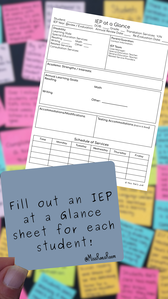
An IEP at a Glance is an abbreviated document that provides a quick reference to a student's IEP.
It allows for quick reference of ... *goals/objectives *strengths *accommodations *modifications *instructional services *specially designed instructions Create these at the beginning of the year and pass them out to all staff who work with your students! Read more about how I create my IEP at a Glance sheets HERE!
Now, take another minute to think of yourself as a child. Think of the teenage you. And now, think of the adult you. Have you changed over the years? Of course you have! We all change, and our students change too. They change developmentally. They change from their experiences. And they change from their interactions with others, including you, as their teacher!
A student’s IEP should report the facts about a student. No one’s interpretation nor opinion should sway the IEP. But we are human, and this does happen. Plus, we never know how the previous student and teacher relationship influenced a student’s progress. So because change is normal, because data can be subjective, and because everyone should be given a second chance, on your first read of the IEP, just read it for the facts. After years working in an urban school district therapeutic middle school classroom setting for students with emotional and mental health challenges, I transitioned into an inclusion classroom in the suburbs. It was a second grade classroom of possibly the nicest children I thought I had ever encountered! The general education teacher that I co-taught with would often tell me things like, “You can discipline them you know” or “It’s okay to raise your voice once and awhile.” And every time she would say things like this, I would think, “What for? These kids are great! They say words like ‘please’ and ‘thank you’. None of their sentences ever include a swear word, and they don’t even know what having an attitude is.” It felt like I had died and gone to teaching heaven. Then, in October, we got word we were getting a new student who our Assistant Principal said looked like a “heavy hitter.” Ugh! The good times are over! A very think IEP was in my mailbox the next morning. I read through it immediately. It told the tale of a boy who was deaf in one ear and extremely violent. The narrative spoke of desks being thrown at teachers, students being attacked, and constant work refusal. When this boy entered our classroom on the first day, I was immediately terrified. His history looked like any other that I had previously worked with, but this second grader towered over me and was easily three times as strong as me! Are you expecting me to tell the story of how we built a strong relationship and as a result, he never demonstrated any of these behaviors? Well, I’m not going to tell you that story. He just never showed any of those behaviors. He was homeless, living in a shelter, during most of the time that he was with us, and he still never even showed a symptom of trauma. We did form a good bond, but I cannot take credit for him acting as a role model student. He was a great kid, affable, polite, and a hard worker. He never showed a drop of anger or violence. We re-wrote the IEP, and as a result, his story was re-written. But he did that by himself. As a result of that experience, I don’t even read any of the narrative portions, including the current performance on the IEP so I am not persuaded - or jaded - by others’ views. I want to meet a student as he/she is. I want to give the student a chance to show me who they are and who they will be for me! Because every child should be given the chance to be who they want to be! Just like you don’t judge a book by it’s cover, don’t judge a student on the opinion of other teachers! After the first week, I complete the close reading strategy. I read students’ IEPs for comprehension of the full text. I read them to fully understand the main idea and key details. At this point, I know the student well enough to not let their previous story change my view of them. While reading student IEPs, review their goals. You will get a better sense of them as you create IEP at a Glance sheets, which we will discuss next, and again, as you match progress monitoring assessments to them, which we will discuss later. On your first of the IEP, just read through them to get a general sense of what your instruction will need to look like during the year. For example, if you are reading a number of decoding goals, you will know that your instruction will need to be phonics heavy! You can read more about how I write IEP goals HERE!
If you are not expected to schedule these meetings, you should still mark the date on your calendar. As the student’s Special Education case manager or liaison, it is your responsibility to alert your school’s Special Education coordinator or IEP team chair if the date is approaching and you have not received a confirmation of the meeting date yet. It will also be your responsibility to attend the meeting and update the IEP, including the IEP goals. In terms of the three year re-evaluation, most districts do not have the Special Education Teacher schedule and chair these meetings. Instead, your school’s Special Education coordinator or IEP team chair will most likely obtain consent for testing as well as schedule and chair the meeting. However, again, as the case manager or liaison, it is your responsibility to alert your school’s Special Education coordinator or IEP team chair if the date is approaching and you have not received a confirmation of the meeting date yet. Typically, an IEP’s expiration date coincides with the annual review date. However, you should double check this when reviewing IEPs. If an IEP expires prior to the annual review date, you should make note of the expiration date on your calendar. This is because regardless of the annual review date, the IEP team will need to meet before the IEP expires. 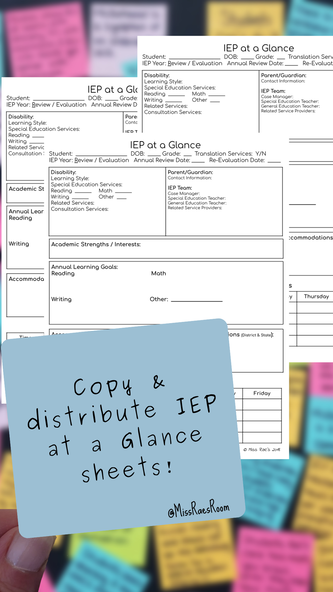
Next...
Copy the IEP at a Glance sheets and... Provide one copy of IEP at a Glances and student IEPs to all staff providing services to the student Ask staff members to sign off on the date that the IEP was received. The IEP is a legal document, and each teacher working with a student on an IEP has the responsibility for understanding required IEP classroom modifications and accommodations. If all teachers have access to the IEP through the database, I save some precious resources - paper and time! I only give teachers the IEP at a Glance with the understanding - or note - that they will look at the full IEP in the school’s online database. Staff members such as Physical Education and music teachers should be aware of classroom modifications and accommodations as well as medical needs, behavior intervention plans and more.
Classroom teachers have a bit more involvement in the IEP process. Therefore, their responsibilities include familiarity with the student's IEP, implementation of PLEP A modifications and accommodations, adherence to confidentiality regulations, consultation with specialist(s) such as Occupational Therapists or Speech and Language Pathologists, attendance at Team meetings, and participation in the development of the IEP.
After each IEP meeting, a new IEP will be proposed, once the proposed IEP is signed, it becomes the active IEP. Once we have an active IEP, distribute the new IEP to all teachers and ask them to sign and date that they have received it. I also give them a copy of the new IEP at a Glance as well.
Here’s how each section of my binder is typically organized:
-IEP at a Glance -Communication log -Progress monitoring data I like to use plastic pocket dividers for each student’s tabbed section. In this way, I can keep any notes, etc. in the pockets. However, as caseloads sometimes grow over the years, it has become more efficient to have the sections organized by assessments. So when my Google Calendar alerts me that I need to test math fact fluency, I can quickly flip to the section containing the sight word assessments and tracking forms for that probe. I also keep reference sheets in my binder for easy access. For example, I always keep a reference page that correlates reading levels to lexile levels. I keep the DIBELS' grade level correlation chart as well. Some data needs to be tracked more frequently. For example, lagging skills in executive functioning, behavior, attention, and social emotional capacities often needs to be tracked within a 30 minute time period or during one subject area. The binder can become too cumbersome when to employ for frequent data tracking. Often times, I clip my forms to clipboards for easy access. The forms I use can be copied onto cardstock and cut smaller to be placed on a key rings for easy access as well. If I have access to an iPad or tablet, I use Google Forms. You can make a simple form that enables you to just hit a button each time the data needs to be recorded. Google Forms will save the data, and when needed, Google Forms will compile the data into one spreadsheet for analysis when it’s needed. And there you have it! Your data is tracked! Now, you can continue on with just being a teaching rockstar and start to plan for the first few weeks of school! You can learn more about my binders HERE!
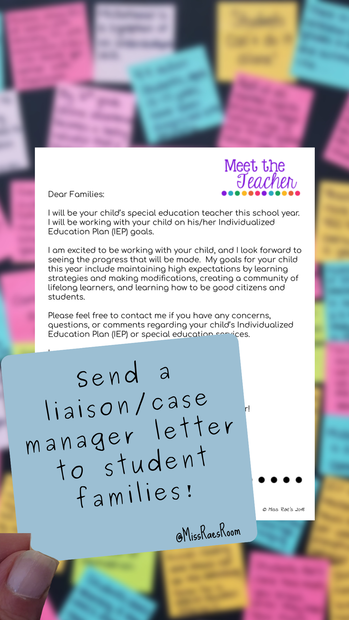
Send a liaison/case manager letter to student families (Hi! I will be your child’s IEP case manager)
Send an introduction letter to all families of students on your caseload. This letter should explain your role as the student’s liaison: “I will be your child’s special education teacher this school year. I will be working with your child on his/her Individualized Education Plan (IEP) goals.” Similar to building positive relationships with your students, you want to get off on the right foot with your students’ families. You also want to infuse your teaching philosophy into your letter in order to help families understand your teaching style and the goals you have for their children: “I am excited to be working with your child, and I look forward to seeing the progress that will be made. My goals for your child this year include maintaining high expectations by learning strategies and making modifications, creating a community of lifelong learners, and learning how to be good citizens and students.” Let your families know you are always available for them as well as their children, and give them the best ways to reach you such as email or your direct phone number at school: “Please feel free to contact me if you have any concerns, questions, or comments regarding your child’s Individualized Education Plan (IEP) or special education services. I can be reached via…” Lastly, set a goal in the form of a call to action for your families: “Let’s work together to make this a successful year!” If you send these immediately, you may not know the times that students’ services are scheduled yet, but if you wait to send this until the second week of school, you could also include a schedule of their IEP services. Oftentimes, related service providers send their own letters with the days and times that they will see a child; however, families may appreciate having this listed all in one place! “Your child’s services have been scheduled as follows: Monday - Speech 9:30-10:00, Reading 1:00-1:45 Tuesday - Reading 1:00-1:45 Wednesday - Speech 9:30-10:00, Reading 1:00-1:45 Thursday - Reading 1:00-1:45 Friday - Reading 1:00-1:45” And don’t forget to have the letter translated into families’ home language! Grab a FREE Special Education Teacher Welcome Letter HERE! Now, here is the rewarding part! These are the reasons that you will cite for staying in the role of a Special Education Teacher!
You can grab all of the forms in the images in my Special Education Teacher Binder by clicking HERE!
And that's it! You have built a strong foundation for a successful year as a Special Education Teacher! Happy & Healthy Teaching! PEACE, Miss Rae References: Ingersoll, R. (2001). Teacher turnover, teacher shortages, and the organization of schools. Seattle: University of Washington, Center for the Study of Teaching and Policy. Plash, S., & Piotrowski, C. (2006). Retention issues: A study of Alabama special education teachers. Education, 127, 125-128. Click HERE to learn how to tackle this list!"Without data, you're just another person with an opinion."
|
|
|
Being a Special Education Teacher is a rewarding, and an albeit exhausting, job. However, the rewards far outweigh the exhaustion!
As Special Education teachers, we work with the highest needs student population. These fragile students require loving and learning, and when you give this to them, they will return it threefold with the greatest rewards. Our Special Education students can make the greatest gains and be the proudest of them! We became Special Education Teachers to give our students the tools to manifest their ability over their disability. We challenge our students to achieve beyond their wildest dreams, and in turn, they will challenge us to do the same!
The Special Education Teacher wears many hats. This is honestly why I love being a Special Education Teacher! You will NEVER be bored!
However, despite all of the roles that you will play on a daily basis from hallway monitor to team member to recess duty teacher, there are a few roles that are actually in your job description.
Apply for open positions on Indeed, SchoolSpring, your local school districts’ sites, and your state’s Department of Education. Then, follow-up with a personalized email, selling yourself as the BEST Special Education Teacher that anyone has ever met. Visit schools in person to drop off your resume and shake hands with the principal.
Do this in the interview, and then, be prepared to answer some interview questions!
Common Special Education Teacher Interview Questions:
Tell us more about yourself.
What is your teaching philosophy?
What is your teaching experience?
Do you have any experience or certifications with specialized curriculum (i.e. Wilson Reading, Orton Gillingham, LiPS)?
What is one of your biggest strengths? Weaknesses?
What makes you the best fit for this position?
Why do you want to work for this district/school?
Why did you want to become a special education teacher?
What is your experience with the IEP process? Writing an IEP?
What is your experience with evaluating students as part of the Special Education process? What tests are you familiar with?
How do you implement inclusive practices?
What is your classroom management style?
How do you foster positive behavior in your classroom?
What has been your most difficult moment or day teaching so far?
Describe your lesson planning process.
How do you incorporate technology in your lessons? In the classroom?
Describe one of your best lessons.
Describe a lesson that you thought was going to be great, but failed. How did you handle it?
What is your experience with co-teaching? What is your opinion of co-teaching?
How do you engage students in their learning?
How would you handle a student who refuses to complete work? Follow directions?
Explain how you differentiate for your students.
How do you modify lessons to allow your students to access grade level content? Meet state standards?
How do you foster communication with parents? How do you foster positive relationships with parents?
How would you handle a parent who disagrees with you at an IEP meeting?
How would you handle a parent who calls or emails you upset about a situation?
What will you bring to the Special Education team?
How will you communicate with services (OT, PT, Speech, etc.)?
How do you monitor students’ progress?
How do you use data to drive instruction? For IEPs?
How do you work with support staff (paraprofessionals)?
How do you handle a disagreement with support staff (paraprofessionals)?
How would you de-escalate a situation? How you would de-escalate a crisis situation?
Do you have any experience with writing a Manifestation Determination or a Behavior Intervention Plan (BIP)?
What is the last professional development book you read or are currently reading? What conference or course have you recently taken?
Questions for a Special Education Teacher to Ask the Interviewer or Team:
What is the philosophy of the district’s Special Education department?
What is the philosophy on Special Education in the school?
What is the school culture like, and how is it fostered?
What technology does the school have?
Does the district provide any type of mentor program?
What professional development opportunities are available for teacher growth?
How does administration support the teachers?
What is the typical caseload of a Special Education Teacher?
Who is responsible for scheduling and chairing the IEP meetings?
Take your time in responding to these questions. Be positive in your answers and support each answer with a story that demonstrates this answer’s reality in your classroom!
Practice interviewing with your friends, family, and fellow teachers. Reflect upon their feedback to hone your interview skills!
And most importantly, believe in yourself! You are a great teacher who will change the lives of each of your students!
By: Miss Rae
So now that you know the secret, don’t tell the kiddos! Let them continue to think you have eyes in the back of your head and all of those other superhuman powers you possess.
But read on to gain a few more powers to support your DiVerSe learners!
Special Education Policies and Laws
Wrightslaw
A wealth of accurate, reliable information about special education law, education law, and advocacy for children with disabilities.
Understood
This site is full of information on the different disabilities from 15 different nonprofit organizations. It offers resources and research-based practical strategies!
Special Education Lesson Plan Ideas
Reading Rockets
This is one of my favorite sites! Resources to help struggling readers build phonemic awareness, phonics, fluency, vocabulary, and comprehension skills. Plus +++ research on all things reading!
ReadWriteThink
Find resources, research AND lesson plans! This site provides educators and students access to the highest quality practices and resources in reading and language arts instruction.
Teaching Channel
I would be the president of the Teaching Channel fan club if one existed! Launched in 2011, the Teaching Channel site is a multi-platform service delivering professional development videos for teachers, showcasing inspiring teachers, ideas, best practices and instructional resources to enhance our teaching knowledge.
Special Education Interventions and Assessments
Easy CBM
The Lite version is a free, simple way to progress monitor student achievement in reading and math.
PBIS World
PBISWorld.com is a comprehensive and easy to use tier 1 through tier 3 PBIS (positive interventions and supports) tool and resource that includes data tracking on almost every behavior that exists in the classroom.
Intervention Central
Intervention Central is a leading resource for Response to Intervention (RTI) tools and resources, including academic and behavior interventions for classroom plus progress monitoring tools.
Special Education Student Learning Tools
Read Works
This webiste is an online resource of reading passages and lesson plans for students of all levels K-12. Texts include pre-made worksheets, quizzes, and other printable materials to enhance the lesson. Students can highlight, annotate, and complete assignments online. ReadWorks is free for teachers to use. Find differentiated texts for your special ed students, and some have a text to speech option!
Florida Center for Reading Research
The Florida Center for Reading Research (FCRR) is a multidisciplinary research center at Florida State University that explores all aspects of reading research. They have a ton of printable resources for instruction.
Newsela
Newsela is a data base of current events stories tailor-made for classroom use. Indexed by broad theme (e.g. War and Peace, Arts, Science, Health, Law, Money), stories are both student-friendly and can be accessed in different formats by reading level. Use Newsela to differentiate nonfiction reading.
CommonLit
CommonLit is a free collection of fiction and nonfiction for 3rd-12th grade classrooms, organized by lexile levels. Passages have a text to speech option PLUS comprehension checks and discussion questions!
Khan Academy
A free website filled with courses, lessons, and practice on a variety of topics from the 1st grade level to the AP level. The site offers short lessons in the form of videos and includes supplementary practice exercises and materials for educators.
Ted Ed andTed Talks
Discover hundreds of animated lessons, create customized lessons, and share your big ideas with other educators. The site is an excellent tool for visual learners Ted Talks also offers many videos on SEL topics for middle and high schoolers!
Kahoot
My students were obsessed with this site! Teachers are able to make their own trivia games (AKA quizzes for students) to play in the classroom. Your students will love to learn and play at the same time. And the best part is that you can download results into a spreadsheet at the end of the game for progress monitoring!
Math Playground
Find engaging math games and more on problem solving, logic, number sense, and the list goes on!
Starfall
This site specializes in reading, phonics & math, offering educational games, movies, books, songs, and more for children k-3/beginning readers! This is also a great tool for ESL students and families as the stories and be read aloud!
Special Education Teacher Blogs
Miss Rae’s Room
Okay, so this is a shameless plug, but…. check out my blog to improve your teaching knowledge and gain some resources and strategies for your DiVerSe learner population
Mrs. D’s Corner
Check out this blog for life skills ideas for your kiddos and a TON of resources!
Pathway 2 Success
A blog on strategies and ideas for social emotional learning.
Special Education Teacher Professional Development Courses
The Learning Tree Professional Development Network, LLC
An online professional development network created by teachers, for teachers. TLTPDN offers provide high quality, responsive courses for educators!
Do you have a favorite website? Share below so we can empower our teaching community!
By Miss Rae
7/23/2019 6 Comments
Write IEP goals for Wilson Reading
Help! How do I write IEP goals for a student using Wilson Reading?
I see students in a one-to-one and small group setting for reading. I use the Wilson Reading System with all of my students, but I struggle to write IEP goals because I ONLY use this program with them. How do I write IEP goals for a student using Wilson Reading?
Sincerely,
Goal-Less Wilson Reading Teacher
Wilson Reading, Spire, and Project Read are examples of specialized curriculums that are based on Orton-Gillingham methodologies. Such programs work for students with learning disabilities in reading because they provide direct and explicit structured, sequential multisensory teaching of the basic elements of language for improved decoding and encoding!
All levels of language, including sounds (phonemes), symbols (graphemes), meaningful word parts (morphemes), word and phrase meanings (semantics), sentences (syntax), longer passages (discourse), and the social uses of language (pragmatics) are taught in conjunction with each other. This can make it difficult to write a targeted IEP goal.
So let me help you out! Here are some IEP goals and objectives to choose from, aligned to the Wilson Reading System!
SAMPLE GOALS:
Given specialized instruction using a multisensory systematic phonics-based program, XXX will increase his/her reading levels for comprehension, decoding, and fluency to an end of first grade reading level by the end of the IEP period as measured by XXX (i.e. NWEA MAP).
Given a multisensory language based explicit instruction in developmental skills which lead to decoding and word recognition, XXX will increase his/her reading skills for comprehension, decoding, encoding, phonics, word recognition and vocabulary development, to at least one grade level above his/her current instructional text level (XXX) with at least 97% accuracy by the end of the IEP period as measured by XXX (i.e. NWEA MAP).
When given a list of 20 nonsense words XXX will be able to accurately decode multisyllabic words that contain closed, open, vowel teams and vowel-consonant-e (beside, statement, remain) syllable types with 90% accuracy as measured by XXX (i.e. Wilson charting records).
Given direct instruction using a systematic and scientifically based reading instruction program, XXX will demonstrate accurate knowledge of reading skills showing one year's growth as measured by XXX (i.e. NWEA MAP) with 95% accuracy.
Given direct instruction using a systematic and scientifically based reading instruction program, XXX will increase his/her reading levels for comprehension, decoding, encoding, and fluency from his/her current level of being able to use 1 syllable type (closed) to being able to use all 6 syllable types as measured by the end of the IEP period as measured by XXX (i.e. Wilson charting records).
SAMPLE OBJECTIVES:
Decoding: Given 15 words in isolation at his/her instructional level, XXX will correctly and independently decode 80 percent of the words accurately.
Decoding: Given 15 non-contextualized CVC, CCVC, CVCC, and/or CVCe words at XXX's instructional level, XXX will correctly decode 80 percent based on teacher notes and charting.
Decoding: Given 15 words in isolation at his/her instructional level including words containing all 6 syllable types and learned prefixes and suffixes, XXX will independently and accurately decode 85 percent of the words.
Fluency: Given text and passages using controlled text at his/her independent reading level, XXX will be able to read 3-4 words together at a rate of 90 wpm based on charts, DIBELS and teacher notes.
Fluency: When given text or reading passage at his/her independent reading level, XXX will use knowledge of decoding skills and word recognition to increase his/her fluency reading orally with appropriate rate, and expression at 90 words per minute with 90% accuracy.
Encoding (Spelling): Given dictation for spelling and grammar, XXX will correctly spell 75 percent of the words at his/her current instructional level based on student samples and teacher record.
Comprehension: Given sentences, paragraphs and reading passages at his/her instructional reading level (controlled-text), XXX will be able to independently use visualization and retell the facts/events with 90 percent accuracy based on teacher notes and benchmark assessments.
Comprehension: XXX will use learned reading strategies of summarizing, questioning, inferencing, making connections and predicting to answer right there and higher order thinking questions from text at his/her instructional level in 4 out of 5 opportunities with up to 2 cues.
Vocabulary: XXX will utilize decoding and context clue strategies to understand unfamiliar words when reading (orally and/or silently) content area texts with decreasing adult assistance in 4 out of 5 observations with 80 percent accuracy.
Happy & Healthy Teaching!
Miss Rae
Related Blogs...
Related Teacher Tools...
Learn more...
And grab this FREEBIE!
700,000 English-Language Learners are identified with a learning disability, representing 14.7 percent of the total ELL population enrolled in U.S. public elementary and secondary schools in 2015. This needs to be addressed!
I don't know about you, but this is the big question across my state.
FIRST - let's take a moment to have some real talk - ALL English language learners need to be given time - time to learn the language.
Understanding the typical trajectory of second language acquisition is important for so many reasons. An understanding of learning the language is important so that we do not mis-identify our EL population as learning disabled.
We always start with dominance testing to establish a student’s dominant language for evaluations. Dominance testing establishes a student's level of proficiency in both languages (native and English).
This is because we should ALWAYS test in a student's dominant language.
Unlike their native English speaking peers, English Language students have to process the language of tests. They are also expected to comprehend cultural expectations embedded within standardized assessments.
What does this mean for educators?
Well, it means that for ELs, every evaluation, not given in their dominant language, becomes a test, to some degree, of language proficiency, rather than an evaluation of intellectual capacity and/or academic ability.
Hence why we test in a student’s dominant language.
If an EL student tested in their native language (because this was determined to be his/her dominant language) has a learning disability as indicated by the discrepancy model of standardized score comparisons, then, the student has a learning disability.
A learning disability in the native language is a learning disability.
But what happens when a student’s dominant language is English? How do we know this is a learning disability and not just the typical path of a second language learner?
Well, we use our knowledge of the typical trajectory of second language acquisition during the evaluatory stage too!
By using a simple retelling (or comprehension conversation after reading), an educator can compare this outcome (results of the comprehension conversation) with a student's expected second language acquisition trajectory. If these two match, then, this is typically indicative that the student is where he or she should be in terms of literacy.
On the other hand, if these two do not correspond, a learning disability should be considered.
One such assessment is called the ACCESS test. This assessment is employed annually to evaluate a student’s progress with learning English as a second language. Students receive composite scores in Oral Language, Literacy, Comprehension, and an Overall score along with four domain scores in Listening, Reading, Writing, and Speaking.
These scores determine placement and drive instruction for the next school year.
Here is how students may be placed based upon ACCESS scores:
WIDA Level 1, Level 2 and Level 3, (ACCESS 2.0 Overall Scores 1.0-2.4) - At least two to three periods (a period is not less than 45 minutes) per day of direct ESL instruction delivered by a licensed ESL teacher
WIDA Level 3, Level 4, Level 5 & Level 6 (ACCESS 2.0 Overall Scores 2.5 and higher) - At least one period (a period is not less than 45 minutes) per day of direct ESL instruction delivered by a licensed ESL teacher
Most research suggests that oral proficiency takes 3 to 5 years to develop, and academic English proficiency can take 4 to 7 years. Therefore, many of our students receive ELL services while they are in school aged. So they need time, and we need to understand the trajectory of learning a second language.
This trajectory along with ACCESS scores help us to determine if there is a learning disability. Ofcourse all students would benefit from additional time with a teacher, we should not mislabel or over-identify our students. This is why we use these resources.
Developing a first language is automatic. Typically, children do not require explicit instruction to develop a first language. This is also true for bilingual or multilingual children who learn more than one language from birth.
On the other hand, explicit teaching of a second language is required if a student is sequential bilingual, which is the definition for a student becoming bilingual by first learning one language and then another. In essence, this is considered to be a process called language learning.
Unfortunately, explicit teaching of grammatical rules does not necessarily mean that a second language learner, or sequential bilingual student, will be able to speak and write with ease. Time, practice and real social experiences are needed to support the language learning process.
However, listening and speaking should be simultaneous, relatively speaking, when learning a second language. This is because students are listening to the words, learning new vocabulary, and should be practicing it by speaking it.
In this first stage of second language acquisition, the silent or receptive phase, second language learners dedicate time to learning vocabulary of the new language. They may also practice saying new terms.
A second language learner does not produce their new language with functional fluency or comprehension (so they are not necessarily "silent" despite the name), but they are attempting speech of their new language.
Early production is the second phase, and this is where students begin to build a vocabulary. Students may begin to use some terms and/or short phrases of early word combinations in their speech. This process continues through the acquisition trajectory and eventually, includes writing as well.
Therefore, two scores -speaking and listening- should be relatively consistent on the ACCESS test. (Keep in mind, we are not talking about academic language. We are talking about social language. Academic language skills develop later.)
However, if there is a large discrepancy between listening and speaking, there is a possibility that the child may have an expressive or receptive problem. The norm is that listening is higher that speaking - otherwise we can suspect a receptive language issues if speaking is higher than listening. If there is a language disorder in the first language, there will be a language disorder in the second language.
There are of course exceptions to the rule, but essentially, high listening, low speaking with a very large discrepancy is cause for concern.
We all have strengths and weaknesses within our profile. There is a typical trajectory for learning English as a second language, but there are also other factors… home life, organizational issues, attentional obstacles… these factors impact typical trajectory. But they do not indicate a learning disability.
Research has suggested that the following questions should be used to determine if an ELL student’s academic struggles are the result of a learning disability or second language learning:
* Is the student receiving sufficient instruction to enable him/her to make effective academic progress?
*How does the student’s progress in listening, speaking, reading, and writing English
as a second language compare to the expected rate of progress for his or her age
and initial level of English proficiency? (Think! expected/typical second language learning trajectory)
* To what extent are behaviors that might otherwise indicate a learning disability
considered to be normal for the child’s cultural background or to be part of the
process of U.S. acculturation?
* How might additional factors—including socioeconomic status, previous educa-
tion experience, fluency in his or her first language, attitude toward school, atti-
tude toward learning English, and personality attributes—impact the student’s academic progress?
My advice - take all factors into consideration and assess, using culturally responsive assessments that assist in fully determining a student’s needs, when determining an English Language student’s eligibility for Special Education.
Our students’ futures are our responsibility.
By Miss Rae
Reference: U.S. Department of Education, National Center for Education Statistics. (2018). The Condition of Education 2018 (2018-144), English Language Learners in Public Schools.
Learn more by taking the course with me!
EF skills are an umbrella term for the cognitive processes of planning, working memory, attention, problem solving, mental flexibility, verbal reasoning, mental flexibility, and emotional self regulation. These skills impact time management, organization, initiation of tasks, multi-tasking and planning ability, and making connections between past experiences and current actions.
Essentially, they help students set a stage for and engage in learning!
EF skills are required for learning!
What are the signs that EF skills are impacting a student?
-forgetting multi-steps for solving problems
-forgetting multi-step directions
-daydreaming in class
-being easily distracted
-trouble starting tasks independently
-difficulties with organization
-losing things frequently
-time management difficulties
-being unable to finish assignments on time
-struggling with transitions
-forgetting names, directions, homework assignments
So what can we do for our students who need a little EF support? Well, we can start with some classroom accommodations!
Executive Functioning Accommodations:
*Visuals! (i.e. picture schedules)
*Alert to transitions
*Step-by-step instructions in simple language supported with visuals
*Color code steps in directions
*Graphic organizers
*Timers! (i.e. iPads, sand timers, laptops)
*Cue student prior to being called upon
*Provide an outline of notes for lectures
*Highlight keywords
*Use a highlighted strip of paper for reading
*Sign-off on student agenda daily
*Provide checklists for completion of tasks, including editing checklists
*Preferential seating (i.e. away from distractions, near good models, close proximity to a teacher)
And for your students who have EF disorders, we can support them with IEP goals!
Here are some sample Executive Functioning IEP goals and objectives:
Given direct instruction, XXX will develop the ability to attend to individual tasks and will improve his/her executive functioning skills through the use of learned strategies for attention and organization in 3 out of 5 observable opportunities by the end of the IEP period.
1. Given support and visual cues, XXX will create a system for organizing personal items in his/her locker/desk/notebook/homework agenda in 3 out of 5 observable opportunities.
2. Given direct instruction and visual supports, XXX will be able to independently and successfully navigate a structured routine within the general education classroom in 3 out of 5 observable opportunities.
3. After explicit and direct instruction, XXX will develop a self regulatory plan for carrying out multi-step tasks (i.e. completing homework, writing an essay, doing a project) and given practice, visual cues and fading adult supports, will apply the plan independently to new situations in 3 out of 5 observable opportunities.
4. Given direct instruction and visual supports, XXX will attend to independent, small group, and whole class instruction and activities with no more than 2 verbal prompts in 3 out of 5 observable opportunities.
Given direct instruction through a cognitive enhancement program, XXX will independently apply learned strategies to improve executive functioning skills in 3 out of 5 observable opportunities by the end of the IEP period.
1. Given support and visual cues, XXX will select and create a system for organizing assignments and school work in 3 out of 5 observable opportunities.
2. Given support and fading adult support, XXX will use a checklist and/or visual schedule to independently complete tasks in 3 out of 5 observable opportunities.
3. Given a task or activity, XXX will indicate and gather what items are needed to complete the task in 3 out of 5 observable opportunities.
4. Given a task or activity, XXX will create a plan to complete the task in 3 out of 5 observable opportunities.
Given direct instruction, XXX will develop the ability to attend to individual tasks and will improve his/her executive functioning skills through the use of learned strategies for attention and organization in 3 out of 5 observable opportunities by the end of the IEP period.
1. XXX will arrive at class with required materials for daily assignments (i.e. paper, pen, pencil, notebook, textbook, chromebook) in 3 out of 5 observable opportunities.
2. XXX will arrive to class on time in 3 out of 5 observable opportunities.
3. XXX will identify and follow rules in lunchroom, bathroom, halls, and/or bus in 3 out of 5 observable opportunities.
4. XXX will identify and follow rules as specified in each class in 3 out of 5 observable opportunities.
Given direct instruction and fading adult support, XXX will remain on task and work independently on classroom tasks in 3 out of 5 observable opportunities by the end of the IEP period.
1. Given direct instruction and fading adult support, XXX will independently begin an assigned task from a prearranged schedule with fading adult support in 3 out of 5 observable opportunities.
2. Given fading adult support, a divider or cubby for distractions, and/or preferential seating, XXX will ignore distractions in environment by continuing to focus on own work in 3 out of 5 observable opportunities.
3. Given fading adult support, a divider or cubby for distractions, and/or preferential seating, XXX will work steadily on task for length of time required by the teacher when given an assignment or activity in 3 out of 5 observable opportunities.
4. Given direct instruction and fading adult support, XXX will attempt to independently resolve problems with an assignment before asking for help in 3 out of 5 observable opportunities.
So what does this service look like on a student's IEP? Well, that depends. And it mainly depends on the student. Ask yourself,"What does the student need?"
Does the student struggle with initiating tasks? Perhaps that means that a student needs 5 minutes at the start of each lesson for instruction on initiating the task. That might mean gathering and organizing materials. It may also include breaking down the task into manageable steps.
Does the student struggle with attending to tasks? Maybe this student needs direct training on using checklists or strategies for focus. This may mean a 5 to 10 minute small group on attending strategies with some additional support in the classroom on how to implement those attending strategies.
Each student is different. Determine the need and develop a plan to bolster that need into a strength!
Happy teaching!
By Miss Rae
Categories
All 504 Academic Testing Academic Testing Reports Achievement Testing Reports Back To School B/d Reversals Coronavirus COVID-19 Discrepancy Model Distance Learning Distance Learning With LD ELL Emotional Disability Executive Functioning Extended School Year First Year Special Education Teacher Advice Fluid Reasoning FREEBIES Goal Tracking IEP IEP At A Glance IEP Goals IEP Meetings Learning Disability Oral Reading Fluency Positive Affirmations For Special Education Students Progress Monitoring Reading Remote Learning RTI Rubrics Running Records SEL For Learning Disabilities Social Emotional Learning Special Ed Teacher Interview Questions Special Ed Teacher Job Description Special Education Special Education Progress Reports Special Education Reading Special Education Reading Programs Special Education Students Special Education Teachers Special Education Teachers Positive Affirmations Special Education Teacher Tips Special Education Websites Specially Designed Reading Instruction Teaching Strategy Trauma Wilson Reading Wilson Reading IEP Goals Writer's Workshop
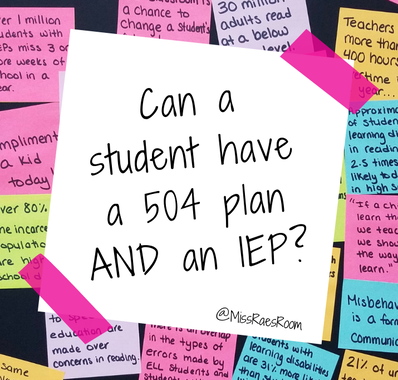
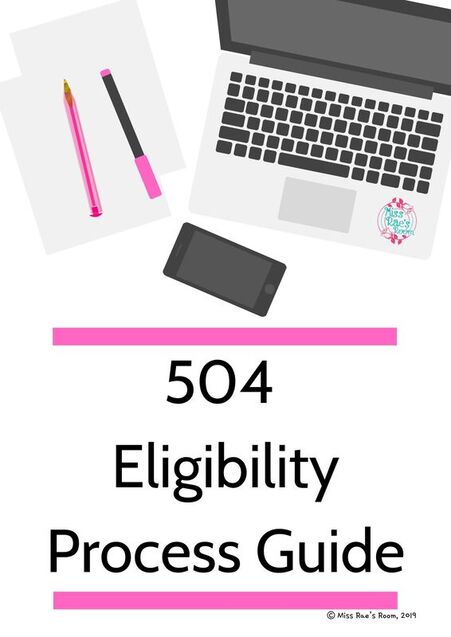
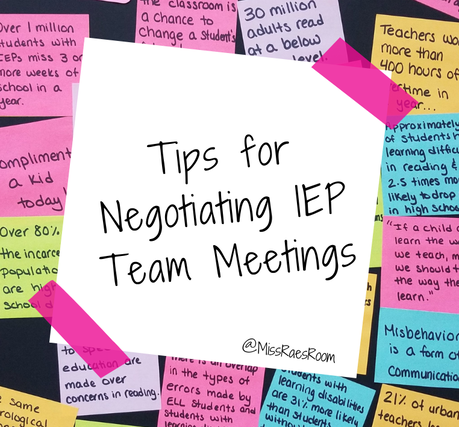
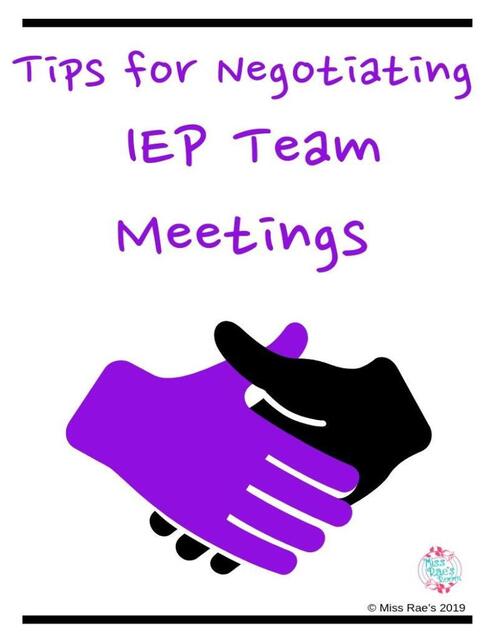
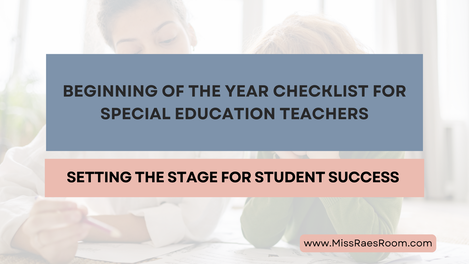
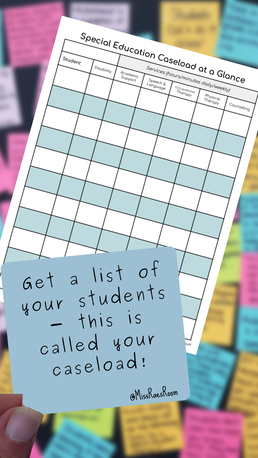
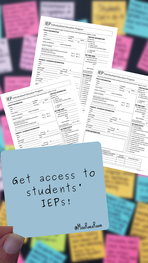
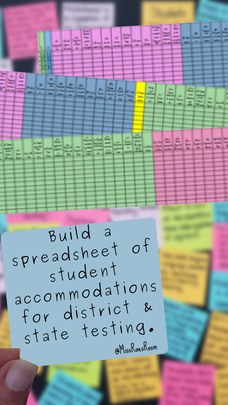
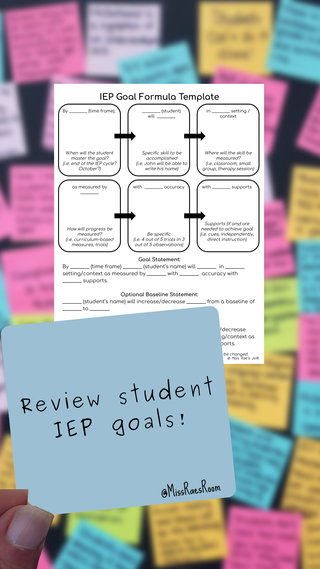
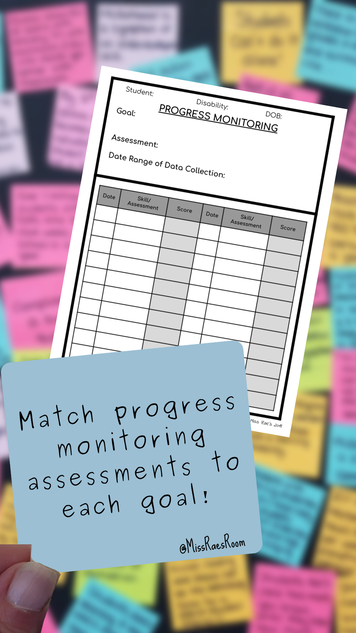
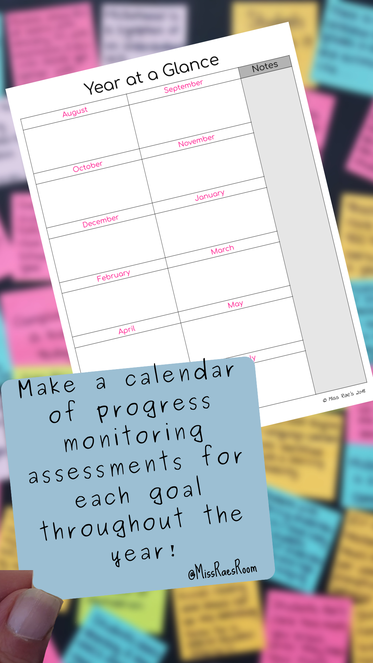
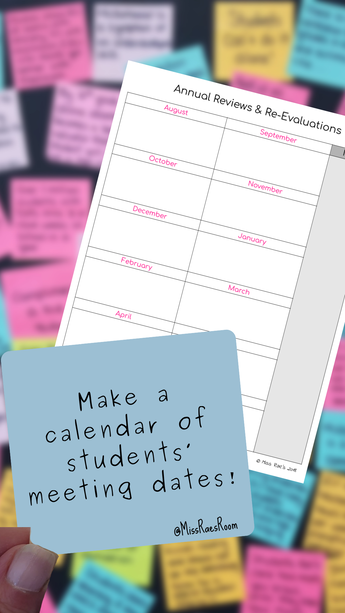
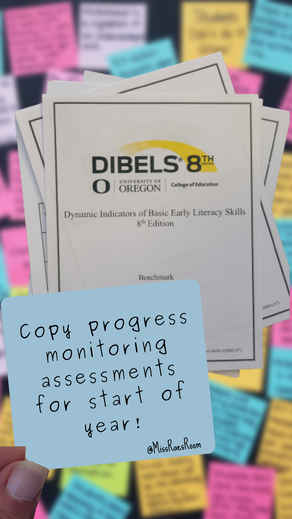
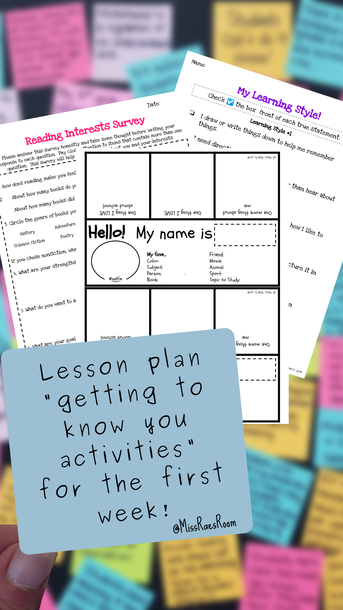
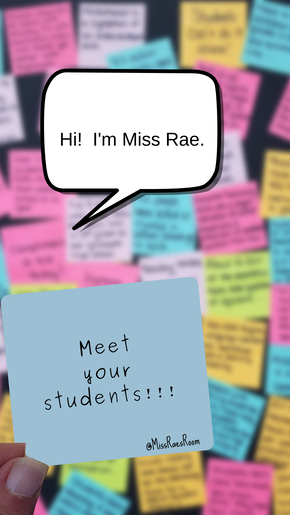
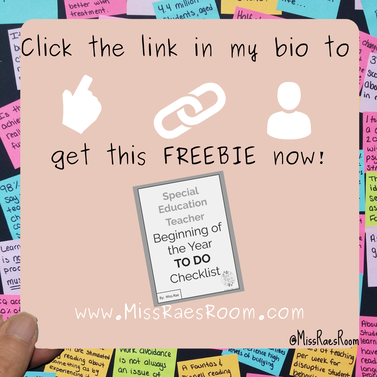
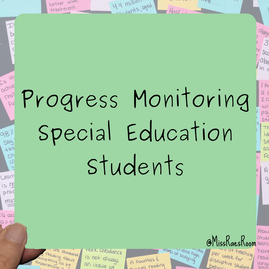
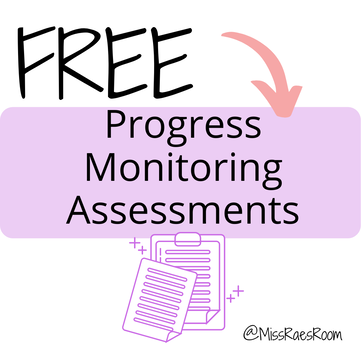
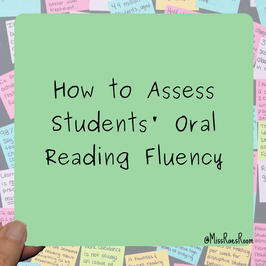
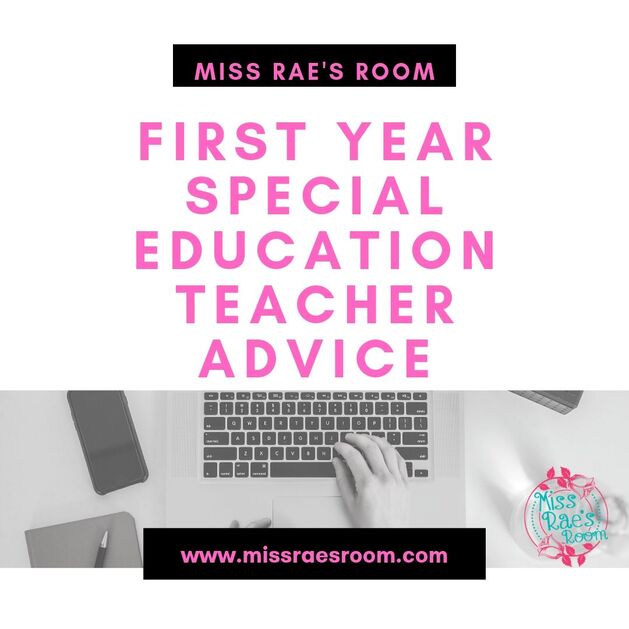
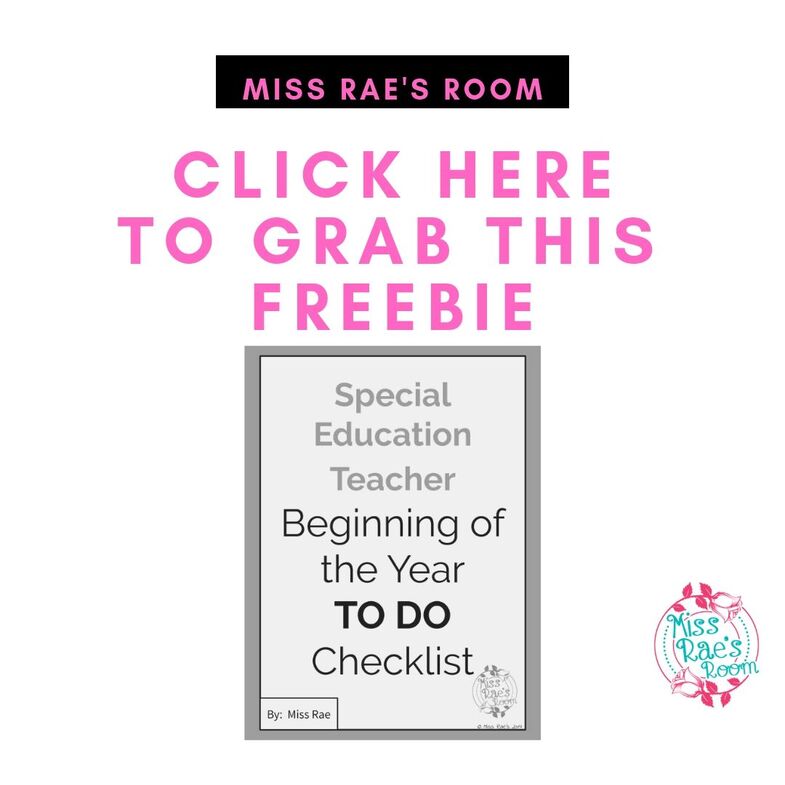
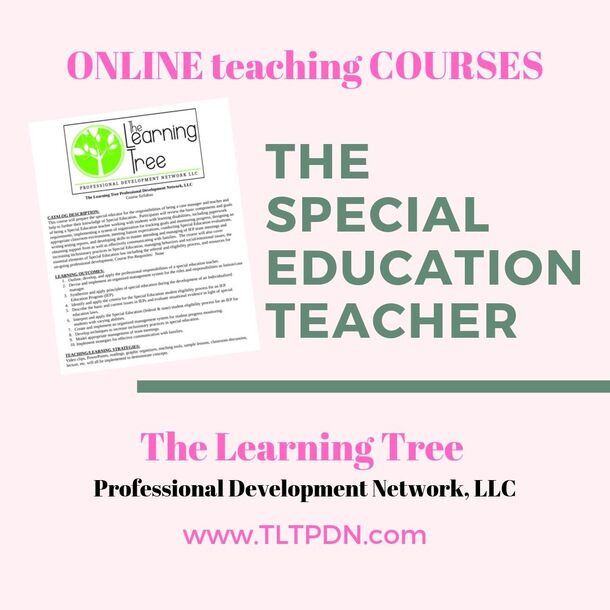
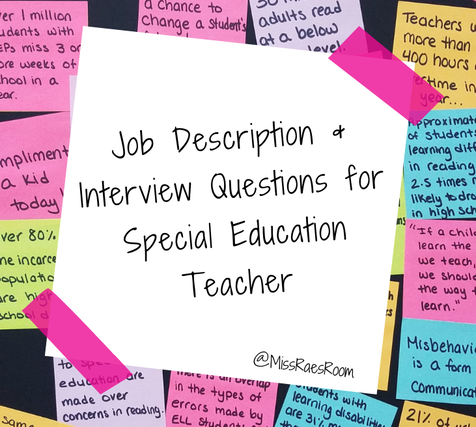
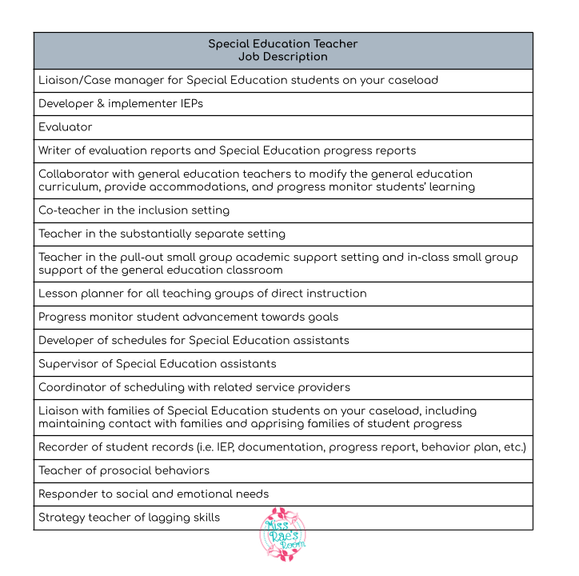
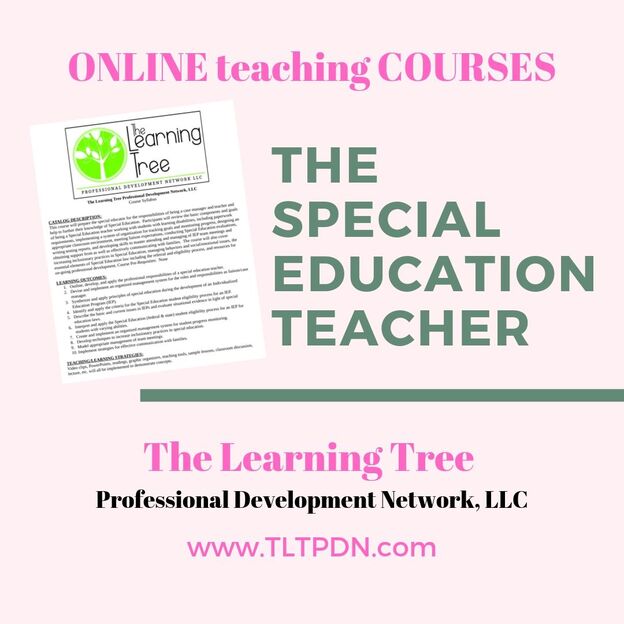
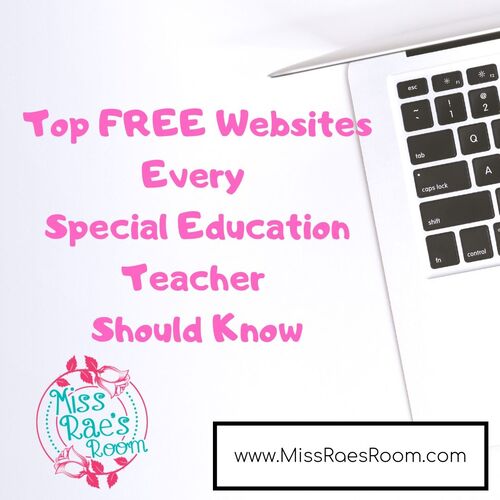
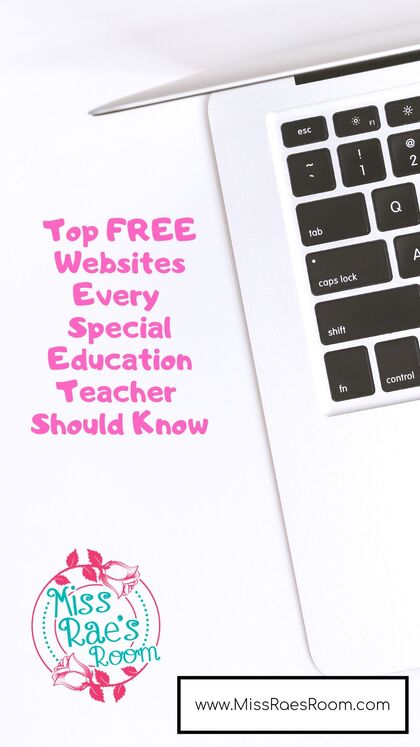
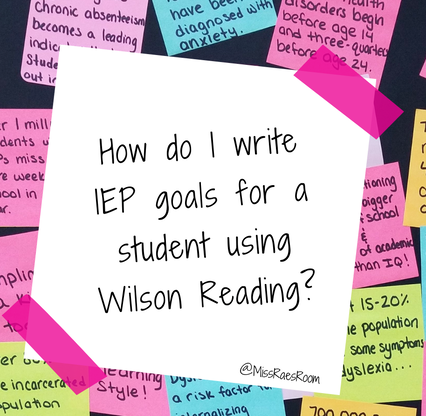
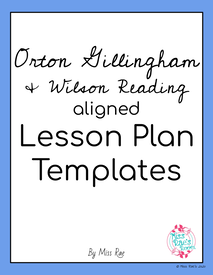
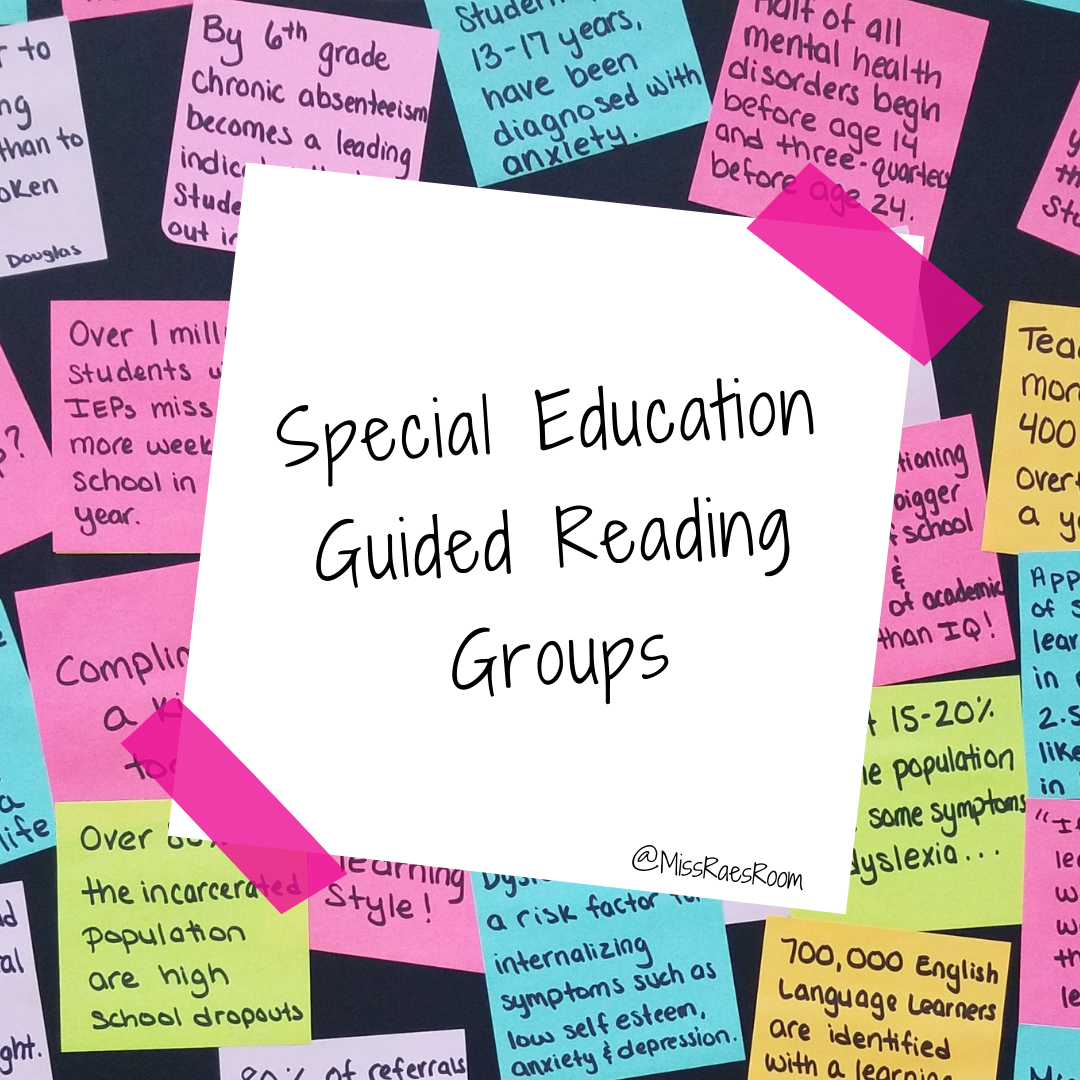
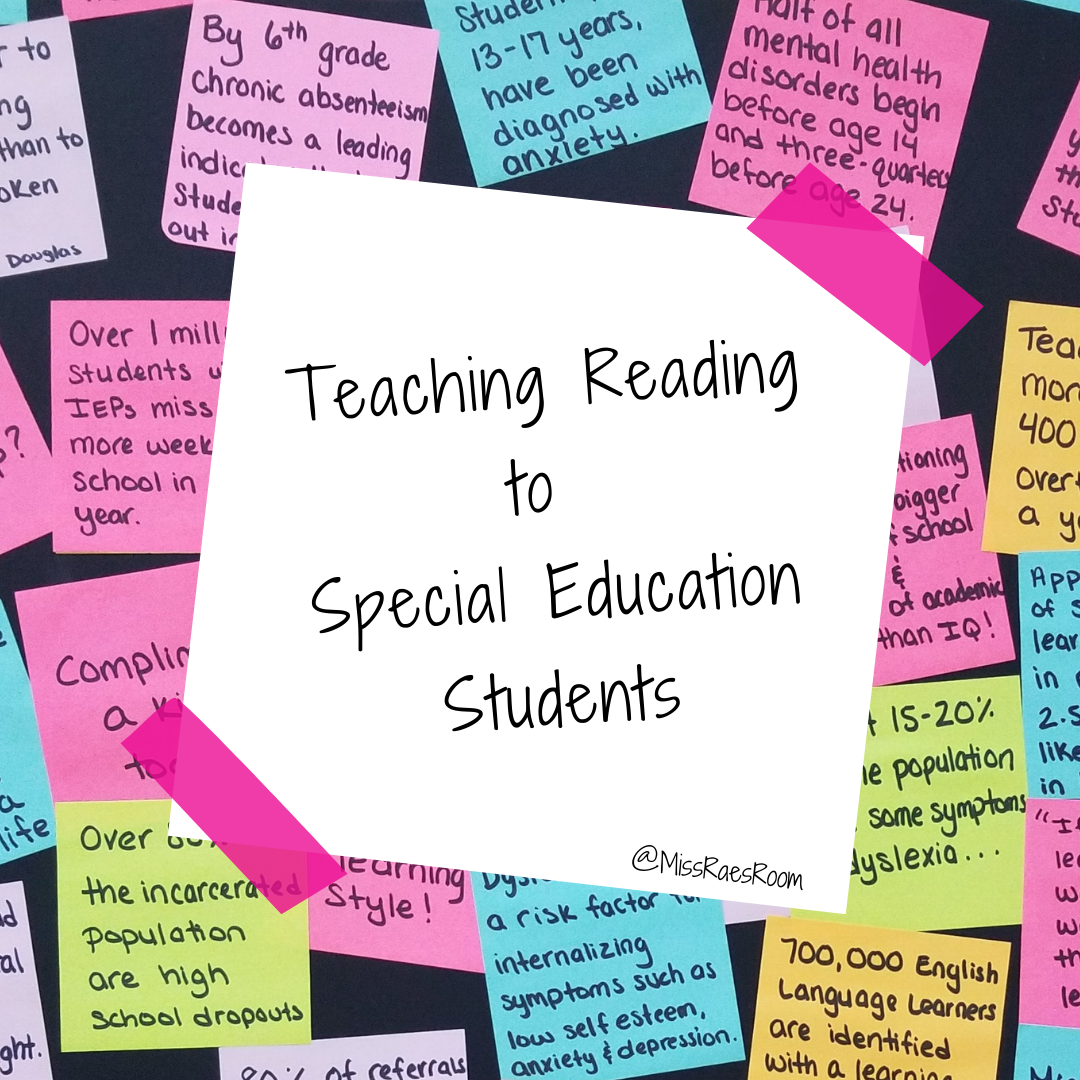
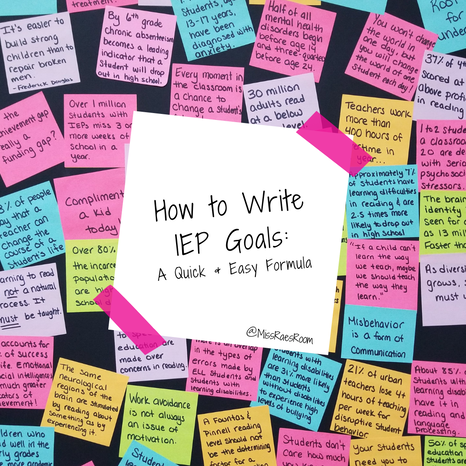
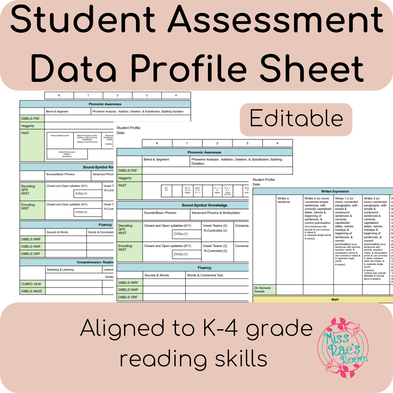
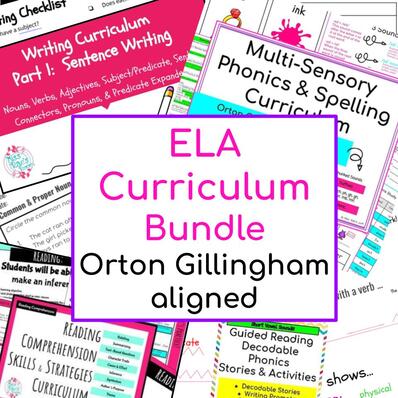

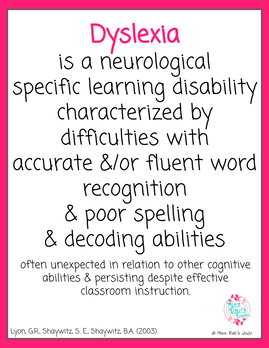
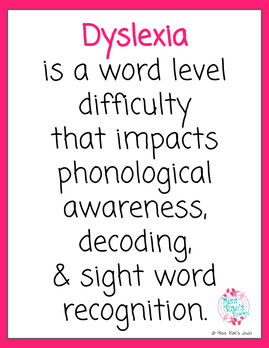
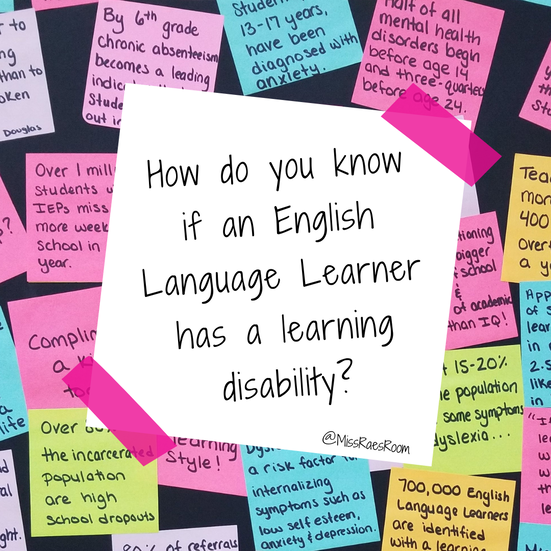
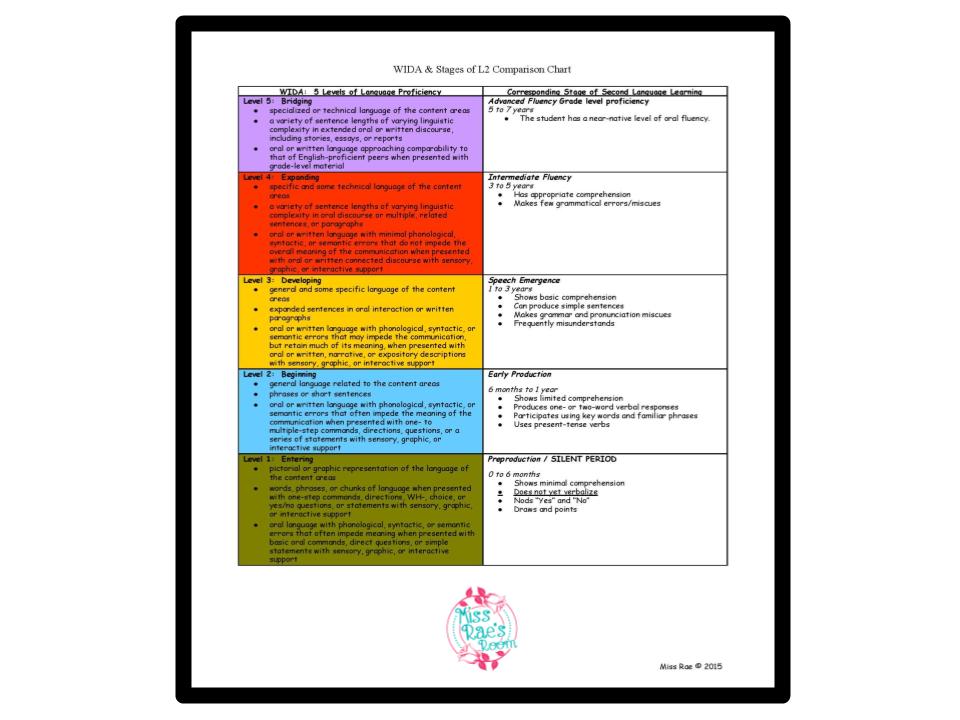
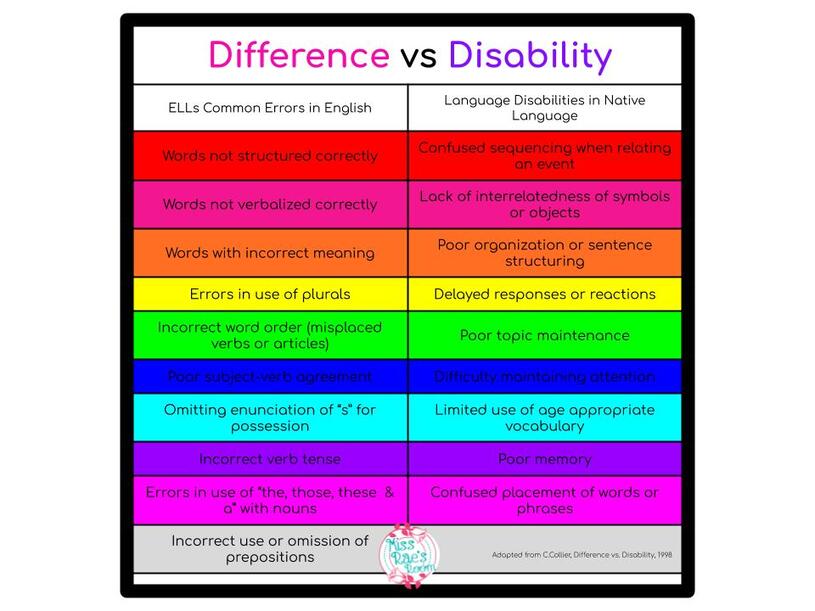
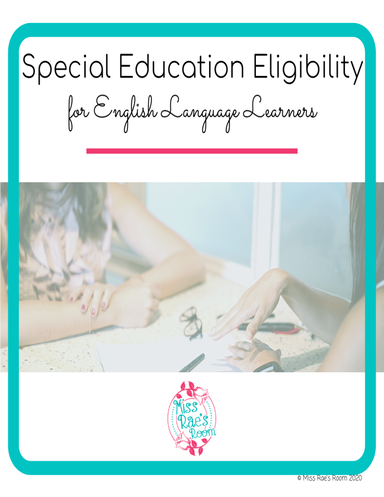
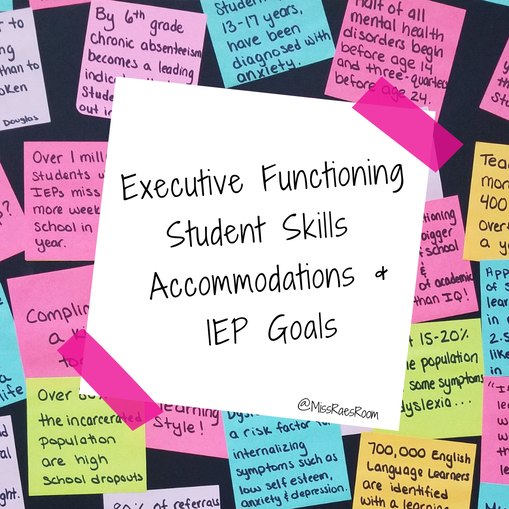
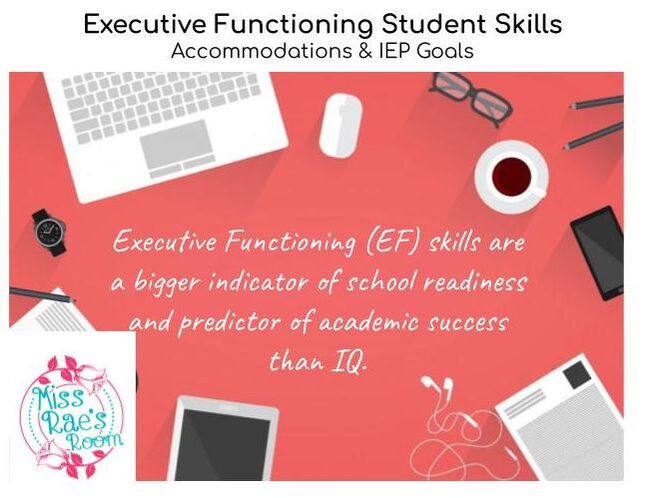
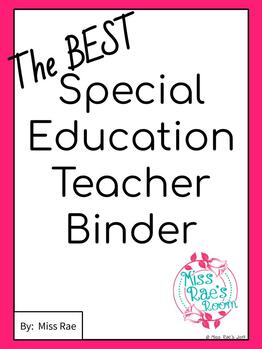
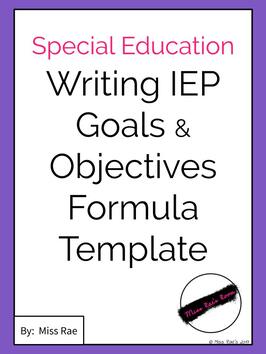
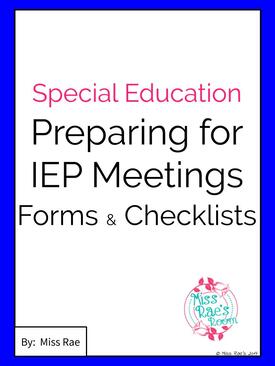
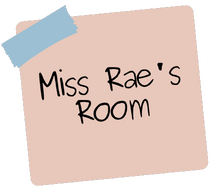
 RSS Feed
RSS Feed